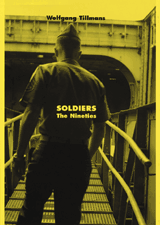PHOTOGRAPHY MONOGRAPHS
|
|
in stock $55.00 Free Shipping UPS GROUND IN THE CONTINENTAL U.S. |
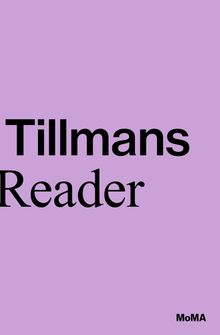 Wolfgang Tillmans: A Reader
Wolfgang Tillmans: A Reader
Published by The Museum of Modern Art, New York.
Edited by Roxana Marcoci and Phil Taylor.
This volume offers a panoramic collection of interviews and writings from an artist for whom language has always been a significant means of creative expression. Arranged chronologically, the assembled texts reflect Tillmans’ thinking on photography, music, politics, nightlife, astronomy, spirituality and activism. The sources are as varied as their content, with statements and conversations that originally appeared in exhibition catalogues rubbing up against social-media posts and song lyrics.
Whether discussing his own work as a photographer or drawing out the thoughts of others, Tillmans is a generous interlocutor with a refreshing clarity of thought. This visually rich and timely publication tracks Tillmans’ contributions to art and cultural criticism in tandem with the social and cultural shifts of the past 30 years.
Wolfgang Tillmans (born 1968) is among the most influential contemporary artists, and the impact of his work registers across the arts, intersecting with fashion, music, architecture, the performing arts, and activism. Known for his genre-defying practice and ongoing investigation into the photographic medium, Tillmans is the recipient of the Turner Prize (2000) and the Hasselblad Foundation International Award in Photography (2015). His foundation, Between Bridges, supports the advancement of democracy, international understanding, the arts and LGBTQ rights.
“Wolfgang Tillmans is not only a great artist, he’s a joyous intellectual whose generosity, wit and good-natured skepticism is political, authentic and playfully profound. Read this volume and marvel at his highbrow yet unpretentious theories on abstraction combined with a low-level appreciation of the down and dirty. Thrill to Wolfgang’s magically elitist yet of-the-people reinvention of ‘real’ photography and weep at the beauty of his love for the ‘unforeseen.’ Can printed museum art-talk be so smart that it becomes sexually arousing for the reader? Sure it can. And this is just the book to prove that.” –John Waters
“For over 30 years, Wolfgang Tillmans has been surveying culture and politics, as attentive to the production of news as he is to the radical intimacies of the nightclub or protest. Through his lens the world recovers its complexity. In an era of dangerous simplifications, we need his work more than ever.” –Olivia Laing
PUBLISHER
The Museum of Modern Art, New York
BOOK FORMAT
Paperback, 6.5 x 9.75 in. / 352 pgs / 100 color.
PUBLISHING STATUS
Pub Date 2/8/2022
Active
DISTRIBUTION
D.A.P. Exclusive
Catalog: SPRING 2022 p. 10
PRODUCT DETAILS
ISBN 9781633451124 TRADE
List Price: $45.00 CAD $60.00
AVAILABILITY
In stock
in stock $45.00 Free Shipping UPS GROUND IN THE CONTINENTAL U.S. |
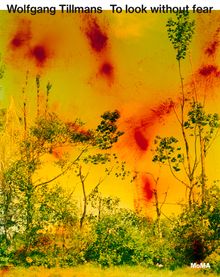 Wolfgang Tillmans: To look without fear
Wolfgang Tillmans: To look without fear
Published by The Museum of Modern Art, New York.
Edited with text by Roxana Marcoci. Text by Quentin Bajac, Yve-Alain Bois, Julia Bryan-Wilson, Clément Chéroux, Durga Chew-Bose, Stuart Comer, Keller Easterling, Paul Flynn, Sophie Hackett, Michelle Kuo, Oluremi C. Onabanjo, Phil Taylor, Wolfgang Tillmans. Chronology by Phil Taylor, Andrew Vielkind.
A visionary creator and intrepid polymath, Wolfgang Tillmans unites formal inventiveness with an ethical orientation that attends to the most pressing issues of life today. While his work transcends the bounds of any single artistic discipline, he is best known for his wide-ranging photographic output. From trenchant documents of social movements to windowsill still lifes, ecstatic images of nightlife to cameraless abstractions, sensitive portraits to architectural studies, astronomical phenomena to intimate nudes, he has explored seemingly every genre of photography imaginable, continually experimenting with how to make new pictures and deepen the viewer’s experience.
Published in conjunction with a major exhibition of Tillmans’ work at the Museum of Modern Art, this copiously illustrated volume surveys four decades of the artist’s career. An outstanding group of writers offer diverse essays addressing key threads of his multifaceted practice, and a new text by Tillmans himself elucidates the distinctive methodology behind his system of presenting photographs. Wolfgang Tillmans: To look without fear grants readers new insight into the work of an artist who has not only changed the way photography is exhibited but pointed contemporary art in dynamic new directions.
Wolfgang Tillmans (born 1968) is among the most influential contemporary artists, and the impact of his work registers across the arts, intersecting with fashion, music, architecture, the performing arts and activism. Tillmans is the recipient of the Turner Prize (2000) and the Hasselblad Foundation International Award in Photography (2015). His foundation, Between Bridges, supports the advancement of democracy, international understanding, the arts and LGBTQ rights.
PUBLISHER
The Museum of Modern Art, New York
BOOK FORMAT
Clth, 9.5 x 12 in. / 320 pgs / 400 color.
PUBLISHING STATUS
Pub Date 8/30/2022
Active
DISTRIBUTION
D.A.P. Exclusive
Catalog: SPRING 2022 p. 15
PRODUCT DETAILS
ISBN 9781633451117 TRADE
List Price: $75.00 CAD $102.00
AVAILABILITY
In stock
in stock $75.00 Free Shipping UPS GROUND IN THE CONTINENTAL U.S. |
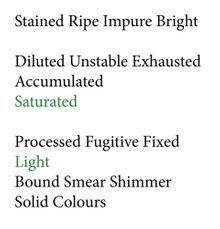 Wolfgang Tillmans: Saturated Light (Silver Works)
Wolfgang Tillmans: Saturated Light (Silver Works)
Published by Walther König, Köln.
Text by Tom Holert. Interview by Klaus Pollmeier.
Though he is best known for his portraiture and observational depictions, German photographer Wolfgang Tillmans (born 1968) has simultaneously created abstract photography over the past 30 years. Dubbed his Silver works, these photographs expand the boundaries of photographic processes, taking what others might call accidents in the photo development process—like stains from trace chemicals and the titular silver nitrate—and using them in a deliberate compositional manner. The result is a series of images that Tillmans describes as “stained, impure, bright, [and] unstable.”
In this artist’s book, Tillmans’ Silver works are brought together for the first time. In addition to high-quality reproductions of the works themselves, Saturated Light includes photographic documentation of the pieces in exhibition settings and as elements of installations. An essay by art theorist Tom Holert discusses the philosophical, aesthetic and material questions that Tillmans’ Silver series pose.
PUBLISHER
Walther König, Köln
BOOK FORMAT
Paperback, 9.75 x 9.75 in. / 416 pgs / 274 color / 6 bw.
PUBLISHING STATUS
Pub Date 7/20/2021
Active
DISTRIBUTION
D.A.P. Exclusive
Catalog: FALL 2021 p. 90
PRODUCT DETAILS
ISBN 9783960989523 FLAT40
List Price: $59.95 CAD $81.95
AVAILABILITY
In stock
in stock $59.95 Free Shipping UPS GROUND IN THE CONTINENTAL U.S. |
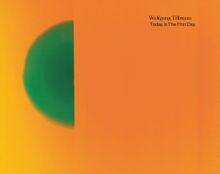 Wolfgang Tillmans: Today Is the First Day
Wolfgang Tillmans: Today Is the First Day
Published by Walther König, Köln.
Edited with text by Wolfgang Tillmans. Text by Devrim Bayar, David Chew, Brian Dillon, Sarah Glennie, Patricia Hecht, Eimear McBride, David Nash, Michaela Nash, Mark O’Kelly, Dirk Snauwaert, Benjamin Stafford, Rachel Thomas, Catherine Wood.
Conceived and designed by German photographer Wolfgang Tillmans (born 1968), this richly illustrated artist’s book explores the latest developments in Tillmans’ work over the last three years. Today Is The First Day conveys his richly diverse approach to image-making, video, performance, music and political activities, and also features newly commissioned texts from contributors—including novelist and author of The Lonely City Olivia Laing, historian and essayist Brian Dillon, curator Catherine Wood and geologist Dr David Chew—each of whom illuminate a different aspect of Tillmans’s work.
The book includes over 30 pages featuring his set design for the English National Opera’s production of War Requiem; recent portraits such as his now iconic image of Frank Ocean; and detailed installation views that allow us to see in-depth Tillmans’ imaginative approach to exhibition installation.
PUBLISHER
Walther König, Köln
BOOK FORMAT
Paperback, 8 x 10 in. / 512 pgs / 537 color / 13 bw.
PUBLISHING STATUS
Pub Date 4/14/2020
Active
DISTRIBUTION
D.A.P. Exclusive
Catalog: FALL 2020 p. 99
PRODUCT DETAILS
ISBN 9783960987543 FLAT40
List Price: $39.95 CAD $55.95
AVAILABILITY
Out of stock
STATUS: Out of stock Temporarily out of stock pending additional inventory. |
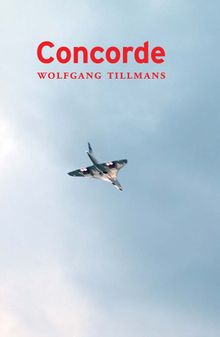 Wolfgang Tillmans: Concorde
Wolfgang Tillmans: Concorde
Published by Walther König, Köln.
Text by Wolfgang Tillmans.
According to photographer Wolfgang Tillmans (born 1968), “for the chosen few, flying Concorde is apparently a glamorous but cramped and slightly boring routine while to watch it in air, landing or taking off is a strange and free spectacle, a super modern anachronism and an image of the desire to overcome time and distance through technology.” With no text other than the inner-front flap’s description, this fifth printing of Tillmans’ now iconic artist’s book (first published in 1997) consists of 62 color photographs of the Concorde airplane—taking off, landing or in flight, and sometimes as just a tiny, birdlike silhouette in the sky. The photographs speak of both the beauty and the environmental devastation produced by this fabled French airplane, both sides of which Tillmans captures in his casual yet formally elegant signature style.
PUBLISHER
Walther König, Köln
BOOK FORMAT
Paperback, 6.5 x 9.5 in. / 128 pgs / 62 color.
PUBLISHING STATUS
Pub Date 9/26/2017
Active
DISTRIBUTION
D.A.P. Exclusive
Catalog: SPRING 2018 p. 140
PRODUCT DETAILS
ISBN 9783960981671 TRADE
List Price: $30.00 CAD $40.00
AVAILABILITY
In stock
in stock $30.00 Free Shipping UPS GROUND IN THE CONTINENTAL U.S. |
 Wolfgang Tillmans
Wolfgang Tillmans
Published by Hatje Cantz.
Text by Theodora Vischer, et al.
This publication accompanies Fondation Beyeler’s survey on the great photographic innovator Wolfgang Tillmans (born 1968). Tillmans first made a name for himself in the early 1990s, with photographs that captured an entire generation and a youth culture of which he was part, and which are now iconic images of that era. However, he quickly expanded his focus, creating works with and without a camera, producing photographs printed as C-prints on photographic paper, as inkjet prints on paper, or as photocopies. Some of these photographs acquire a sculptural, objectlike quality. Tillmans has also developed new compositional and formal, anti-hierarchical ways of installing his pictures in spaces. This substantial, clothbound volume offers a comprehensive overview of his achievements.
Wolfgang Tillmans (born 1968) began his career in photography documenting Hamburg’s rave scene in the late 1980s. His earliest images were printed on digital copiers, and in the mid-1990s, living in London and then New York, Tillmans began to foreground the lo-fi properties of his printed images by exhibiting them pinned or taped to gallery walls. In 2005, at an exhibition at Maureen Paley gallery titled Truth Study Center, he further extended this approach by exhibiting photographs alongside newspaper cuttings, pamphlets and other kinds of printed matter, on custom-made wooden vitrines. This installation also brought to the fore more political themes in Tillmans’ photography. In 2011 he traveled to Haiti to document reconstruction efforts following the previous year’s earthquakes.
PUBLISHER
Hatje Cantz
BOOK FORMAT
Hardcover, 9.75 x 12 in. / 304 pgs / 200 color.
PUBLISHING STATUS
Pub Date 9/26/2017
Out of stock indefinitely
DISTRIBUTION
D.A.P. Exclusive
Catalog: FALL 2017 p. 48
PRODUCT DETAILS
ISBN 9783775743297 TRADE
List Price: $85.00 CAD $112.50
AVAILABILITY
Not available
STATUS: Out of stock indefinitely. |
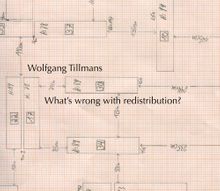 Wolfgang Tillmans: What’s Wrong with Redistribution?
Wolfgang Tillmans: What’s Wrong with Redistribution?
Published by Walther König, Köln.
Text by Tom McDonough.
PUBLISHER
Walther König, Köln
BOOK FORMAT
Hardcover, 11 x 9.5 in. / 320 pgs / 250 color.
PUBLISHING STATUS
Pub Date 1/26/2016
Active
DISTRIBUTION
D.A.P. Exclusive
Catalog: SPRING 2016 p. 97
PRODUCT DETAILS
ISBN 9783863358228 TRADE
List Price: $65.00 CAD $87.00
AVAILABILITY
In stock
in stock $65.00 Free Shipping UPS GROUND IN THE CONTINENTAL U.S. |
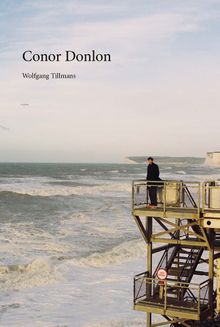 Wolfgang Tillmans: Conor Donlon
Wolfgang Tillmans: Conor Donlon
Published by Walther König, Köln.
Text by Alex Needham.
Tillmans’ photographs are at once intimate and emblematic of a flourishing arts era, where both artists’ work gained momentum. The Guardian’s culture editor Alex Needham introduces the work with an essay about Donlon’s initial role as Tillmans’ assistant, contextualizing the artists’ collaboration and the inception of London independent bookstore Donlon Books in 2008.
PUBLISHER
Walther König, Köln
BOOK FORMAT
Paperback, 9.5 x 16 in. / 192 pgs / 185 color.
PUBLISHING STATUS
Pub Date 9/27/2016
Active
DISTRIBUTION
D.A.P. Exclusive
Catalog: SPRING 2017 p. 131
PRODUCT DETAILS
ISBN 9783863359416 FLAT40
List Price: $29.95 CAD $39.95
AVAILABILITY
In stock
in stock $29.95 Free Shipping UPS GROUND IN THE CONTINENTAL U.S. |
 Wolfgang Tillmans: Abstract Pictures
Wolfgang Tillmans: Abstract Pictures
Published by Hatje Cantz.
Text by Dominic Eichler, Wolfgang Tillmans.
PUBLISHER
Hatje Cantz
BOOK FORMAT
Paperback, 11.75 x 10.75 in. / 384 pages / 312 color.
PUBLISHING STATUS
Pub Date 11/24/2015
Out of stock indefinitely
DISTRIBUTION
D.A.P. Exclusive
Catalog: SPRING 2016 p. 96
PRODUCT DETAILS
ISBN 9783775740814 TRADE
List Price: $50.00 CAD $67.50
AVAILABILITY
Not available
STATUS: Out of stock indefinitely. |
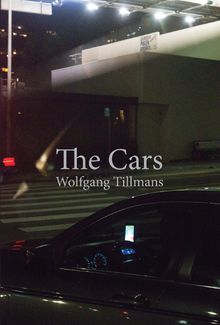 Wolfgang Tillmans: The Cars
Wolfgang Tillmans: The Cars
Published by Walther König, Köln.
Edited and text by Wolfgang Tillmans.
PUBLISHER
Walther König, Köln
BOOK FORMAT
Paperback, 6.5 x 9.5 in. / 128 pages / 150 color.
PUBLISHING STATUS
Pub Date 9/29/2015
Active
DISTRIBUTION
D.A.P. Exclusive
Catalog: SPRING 2016 p. 96
PRODUCT DETAILS
ISBN 9783863357528 TRADE
List Price: $30.00 CAD $40.00
AVAILABILITY
Out of stock
STATUS: Out of stock Temporarily out of stock pending additional inventory. |
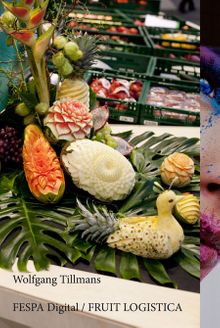 Wolfgang Tillmans: Fruit Logistica
Wolfgang Tillmans: Fruit Logistica
Fespa Digital
Published by Walther König, Köln.
PUBLISHER
Walther König, Köln
BOOK FORMAT
Paperback, 6.25 x 9.5 in. / 144 pgs / 120 color.
PUBLISHING STATUS
Pub Date 10/31/2012
Out of stock indefinitely
DISTRIBUTION
D.A.P. Exclusive
Catalog: SPRING 2013 p. 88
PRODUCT DETAILS
ISBN 9783863352110 TRADE
List Price: $34.95 CAD $45.95
AVAILABILITY
Not available
STATUS: Out of stock indefinitely. |
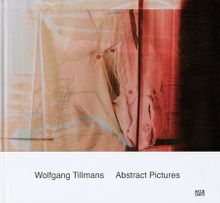 Wolfgang Tillmans: Abstract Pictures
Wolfgang Tillmans: Abstract Pictures
Published by Hatje Cantz.
Text by Dominic Eichler.
Wolfgang Tillmans (born 1968) began his career in photography documenting Hamburg's rave scene in the late 1980s. His earliest images were printed on digital copiers, and in the mid-1990s, living in London and then New York, Tillmans began to foreground the lo-fi properties of his printed images by exhibiting them pinned or taped to gallery walls. In 2005, at an exhibition at Maureen Paley gallery titled Truth Study Center, he further extended this approach by exhibiting photographs alongside newspaper cuttings, pamphlets and other kinds of printed matter, on custom-made wooden vitrines. This installation also brought to the fore more political themes in Tillmans' photography. In 2011 he traveled to Haiti to document reconstruction efforts following the previous year's earthquakes.
PUBLISHER
Hatje Cantz
BOOK FORMAT
Hardcover, 11.5 x 10.5 in. / 382 pgs / 275 color.
PUBLISHING STATUS
Pub Date 10/31/2011
Out of print
DISTRIBUTION
D.A.P. Exclusive
Catalog: FALL 2011 p. 93
PRODUCT DETAILS
ISBN 9783775727433 TRADE
List Price: $85.00 CAD $100.00
AVAILABILITY
Not available
STATUS: Out of print | 00/00/00 For assistance locating a copy, please see our list of recommended out of print specialists |
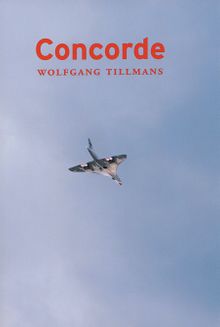 Wolfgang Tillmans: Concorde
Wolfgang Tillmans: Concorde
Published by Walther König, Köln.
PUBLISHER
Walther König, Köln
BOOK FORMAT
Paperback, 6.5 x 9.5 in. / 128 pgs / 62 color.
PUBLISHING STATUS
Pub Date 1/15/2008
Out of print
DISTRIBUTION
D.A.P. Exclusive
Catalog: SPRING 2008 p. 190
PRODUCT DETAILS
ISBN 9783883752730 TRADE
List Price: $34.00 CAD $40.00
AVAILABILITY
Not available
STATUS: Out of print | 00/00/00 For assistance locating a copy, please see our list of recommended out of print specialists |
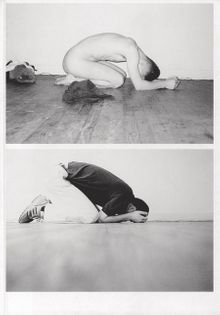 Wolfgang Tillmans
Wolfgang Tillmans
Published by JRP|Ringier.
PUBLISHER
JRP|Ringier
BOOK FORMAT
Hardcover 8.5 x 12 in. / 80 pgs / 45 duotone.
PUBLISHING STATUS
Pub Date 8/1/2008
Out of print
DISTRIBUTION
D.A.P. Exclusive
Catalog: FALL 2008 p. 93
PRODUCT DETAILS
ISBN 9783905829365 TRADE
List Price: $35.00 CAD $40.00
AVAILABILITY
Not available
STATUS: Out of print | 00/00/00 For assistance locating a copy, please see our list of recommended out of print specialists |
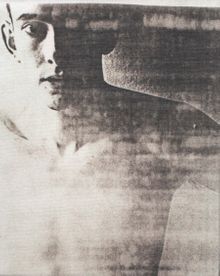 Wolfgang Tillmans: Lighter
Wolfgang Tillmans: Lighter
Published by Hatje Cantz.
Text by Julie Ault, Daniel Birnbaum, Joachim Jaeger.
PUBLISHER
Hatje Cantz
BOOK FORMAT
Clothbound, 10 x 11.75 in. / 400 pgs / 210 color.
PUBLISHING STATUS
Pub Date 8/1/2008
Out of print
DISTRIBUTION
D.A.P. Exclusive
Catalog: FALL 2008 p. 42
PRODUCT DETAILS
ISBN 9783775721875 TRADE
List Price: $95.00 CAD $115.00
AVAILABILITY
Not available
STATUS: Out of print | 00/00/00 For assistance locating a copy, please see our list of recommended out of print specialists |
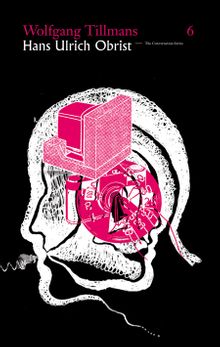 Hans Ulrich Obrist & Wolfgang Tillmans: The Conversation Series
Hans Ulrich Obrist & Wolfgang Tillmans: The Conversation Series
Vol. 6
Published by Walther König, Köln.
PUBLISHER
Walther König, Köln
BOOK FORMAT
Paperback, 5.25 x 8.25 in. / 140 pgs / 30 bw.
PUBLISHING STATUS
Pub Date 3/1/2008
Out of stock indefinitely
DISTRIBUTION
D.A.P. Exclusive
Catalog: SPRING 2008 p. 38
PRODUCT DETAILS
ISBN 9783865601339 TRADE
List Price: $22.00 CAD $30.50
AVAILABILITY
Not available
STATUS: Out of stock indefinitely. |
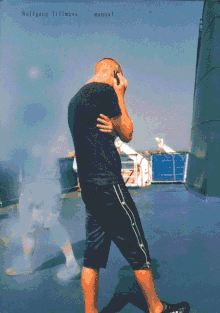 Wolfgang Tillmans: Manual
Wolfgang Tillmans: Manual
Published by Walther König, Köln.
Edited by Wolfgang Tillmans.
When he is working on an exhibition or a publication, Tillmans displays and combines pictures on long tables in his studio so that the images are "held in position only by their own weight. The method of laying out two-dimensional objects on a table produces 'clarity' and allows perspective. A new text emerges through the combination of intrinsically different pieces of paper. The issues dealt with on these tables do not claim to be fully comprehensive and the items chosen do not profess to be definitive examples of their kind. Rather, this multivocal process allows me to amplify voices I feel need strengthening, contrasting them with their opposites and their neighbors." This method has become a concept. In Manual the artist combines his own photographs, painterly works and texts together with already existing newspaper articles to create an associative, comprehensive view. The material is condensed into a complex artistic dialogue with various social and political themes, like AIDS or the question of absolute truth, which the artist has been exploring for years.
PUBLISHER
Walther König, Köln
BOOK FORMAT
Clothbound, 8.5 x 12 in. / 432 pgs / 416 color.
PUBLISHING STATUS
Pub Date 7/1/2007
Out of stock indefinitely
DISTRIBUTION
D.A.P. Exclusive
Catalog: FALL 2007
PRODUCT DETAILS
ISBN 9783865601322 TRADE
List Price: $75.00 CAD $99.00
AVAILABILITY
Not available
STATUS: Out of stock indefinitely. |
Wolfgang Tillmans: Portraits
Signed Edition
Published by D.A.P./Distributed Art Publishers.
Text by Wolfgang Tillmans.
For artist Wolfgang Tillmans, portraiture is a collaborative process between photographer and accomplice. While Tillmans' photographs are often referred to as casual, they are actually the result of a carefully constructed process of engagement with his models. Each sitter, be they a world-famous rock star or a family member, issues forth both vulnerability and dignity. Presented here are a selection of some of the best of these portraits, taken between 1988 to 2001, and chosen by Tillmans himself. Subjects include filmmaker John Waters, architect Rem Koolhaas, musicians Moby and Michael Stipe, actresses Irm Hermann and Chloe Sevigny, as well as the artist's family and friends.
PUBLISHER
D.A.P./Distributed Art Publishers
BOOK FORMAT
Clothbound, 9.25 x 12 in. / 144 pgs / 68 color
PUBLISHING STATUS
Pub Date 2/2/2002
Out of print
DISTRIBUTION
D.A.P. Exclusive
Catalog: SPRING 2002
PRODUCT DETAILS
ISBN 9781891024450 TRADE
List Price: $39.95 CAD $50.00
AVAILABILITY
Not available
STATUS: Out of print | 6/1/2005 For assistance locating a copy, please see our list of recommended out of print specialists |
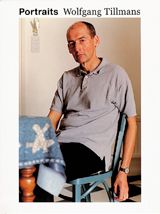 Wolfgang Tillmans: Portraits
Wolfgang Tillmans: Portraits
Published by D.A.P./Distributed Art Publishers.
Essay by Wolfgang Tillmans.
PUBLISHER
D.A.P./Distributed Art Publishers
BOOK FORMAT
Clothbound, 9.25 x 12 in. / 144 pgs / 68 color.
PUBLISHING STATUS
Pub Date 12/2/2001
Out of print
DISTRIBUTION
D.A.P. Exclusive
Catalog: SPRING 2002 p. 93
PRODUCT DETAILS
ISBN 9781891024368 TRADE
List Price: $39.95 CAD $50.00
AVAILABILITY
Not available
STATUS: Out of print | 00/00/00 For assistance locating a copy, please see our list of recommended out of print specialists |
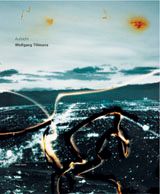 Wolfgang Tillmans
Wolfgang Tillmans
View From Above
Published by Hatje Cantz.
Edited by Zdnek Felix. Texts by Rudolf Schmitz, Giorgio Verzotti.
PUBLISHER
Hatje Cantz
BOOK FORMAT
Hardcover, 9.5 x 11 in. / 240 pgs / 200 color
PUBLISHING STATUS
Pub Date 11/2/2001
Out of print
DISTRIBUTION
D.A.P. Exclusive
Catalog: FALL 2001
PRODUCT DETAILS
ISBN 9783775710848 TRADE
List Price: $45.00 CAD $55.00
AVAILABILITY
Not available
STATUS: Out of print | 5/23/2006 For assistance locating a copy, please see our list of recommended out of print specialists |
PUBLISHER
Walther König, Köln
BOOK FORMAT
Hardcover, 8.5 x 12 in. / 80 pgs / 83 bw
PUBLISHING STATUS
Pub Date 10/2/1999
No longer our product
DISTRIBUTION
D.A.P. Exclusive
Catalog: SPRING 2000
PRODUCT DETAILS
ISBN 9783883753775 SDNR30
List Price: $40.00 CAD $50.00
AVAILABILITY
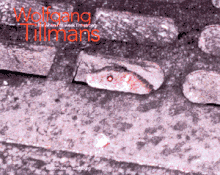 Wolfgang Tillmans
Wolfgang Tillmans
For When I'm Weak I'm Strong
Published by Cantz.
Photographs by Collier Schorr. Contributions by Annelie Lutgens. Text by Helen Molesworth, Wolfgang Tillmans.
PUBLISHER
Cantz
BOOK FORMAT
Paperback, 9.75 x 7.75 in. / 184 pgs / 90 color
PUBLISHING STATUS
Pub Date 10/2/1996
Out of print
DISTRIBUTION
D.A.P. Exclusive
Catalog: SPRING 1997
PRODUCT DETAILS
ISBN 9783893228881 TRADE
List Price: $35.00 CAD $40.00
AVAILABILITY
Not available
STATUS: Out of print | 4/23/2003 For assistance locating a copy, please see our list of recommended out of print specialists |

